Initiatives for Effective Use of Resources Back Number (2021)
Back to Latest Initiatives for Effective Use of Resources
Basic Approach
The MinebeaMitsumi Group recognizes that there are limits to the availability of resources used in its products, which include metals, plastics, and other raw materials, along with oil, natural gas, and other energy sources. Additionally, with regard to rare earth elements indispensable to the manufacture of electronics, since the number of countries producing and exporting the materials is limited, they are more susceptible to export restrictions.
We believe that the effective use of resources is critical to the continuation of our business activities, and to that end we are taking various measures.
Results of FY2020 Initiatives
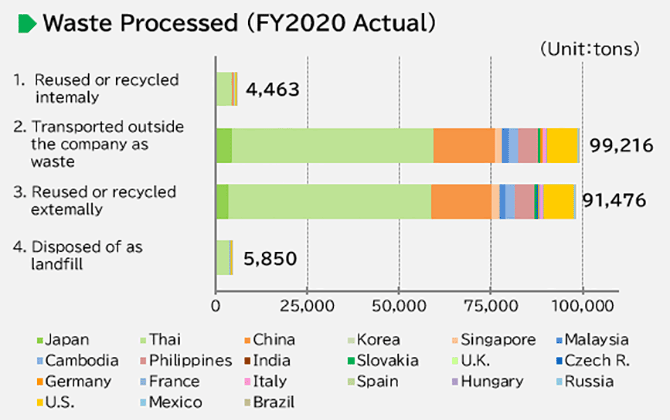 In FY2020, principal raw materials used by the MinebeaMitsumi Group included approximately 100,262 tons of steel and 21,178 tons of resin, and the total amount of materials used decreased 7.8% compared with FY2019.
In FY2020, principal raw materials used by the MinebeaMitsumi Group included approximately 100,262 tons of steel and 21,178 tons of resin, and the total amount of materials used decreased 7.8% compared with FY2019.
The amount of landfill waste generated by the Group's operations in FY2020 totaled 5,850 tons, decreasing 15.6% compared to FY2019.
At our mass production plants in Thailand and China, we are recycling water inside the plants to the greatest extent possible and prevent external emissions through our "Plant Wastewater Zero System."
Water emissions from Group plants in FY2020 totaled 3,846,312 m3, an decrease of 258,516 m3 compared with FY2019.

MinebeaMitsumi is awarded "A-" in CDP Water Security 2020
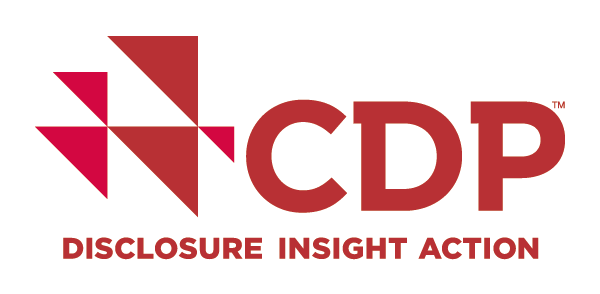 MinebeaMitsumi was awarded the "A-" in the "CDP Water Security 2020," a survey conducted by the UK non-profit organization CDP*.
MinebeaMitsumi was awarded the "A-" in the "CDP Water Security 2020," a survey conducted by the UK non-profit organization CDP*.
CDP evaluates the company's commitment to environmental issues in terms of "leadership," "management," "recognition," and "disclosure of information," in eight ranks, with "A-" being the second from the top.
* CDP: A non-government organization (NGO) established in the United Kingdom in 2000. The organization operates a global information disclosure system for investors, companies, cities, countries, and regions to manage environmental impact.
Plant Initiatives
Initiatives for Effective Use of Resources (Japan, Thailand, Malaysia, China, and other countries)
The MinebeaMitsumi Group actively takes measures to increase yields in manufacturing and reduce the occurrence of defective products, but when producing electrical and electronic products, generation of leftover electric wire and steel materials, and the occurrence of reject products during manufacturing processes cannot be avoided.
We outsource this type of electrical and electronic waste to processing companies with advanced recycling technologies to break down and sort the waste to the raw material level to the extent possible and recycle it as resources.
Electric wire, for example, comprises copper wire covered by plastic, and resource recycling is not possible with the copper and plastic together. Consequently, discarded electrical wire is finely shredded to a degree that the copper and plastic are separated and the materials are sorted for resource recycling.
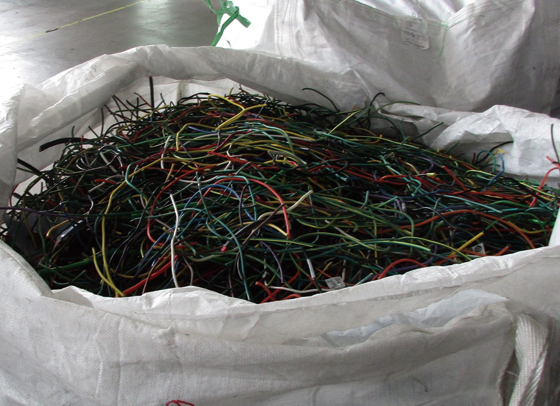
Shredded electric wire
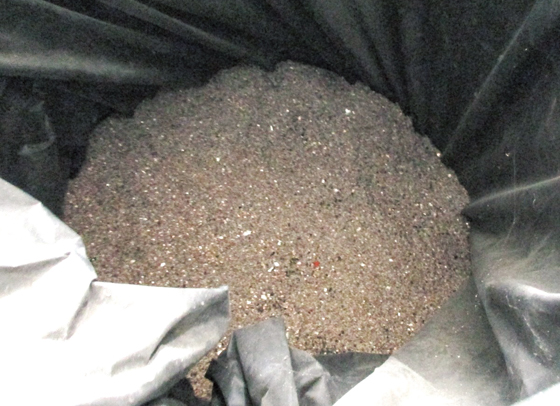
Copper pieces recovered from electric wire
Reuse of Waste Materials Generated at Reconstructed Plants (Japan: Akita Business Division)
When reconstructing a building, the Akita Business Division finely ground up the concrete used in the foundations of the old building and reused it as gravel at the site.
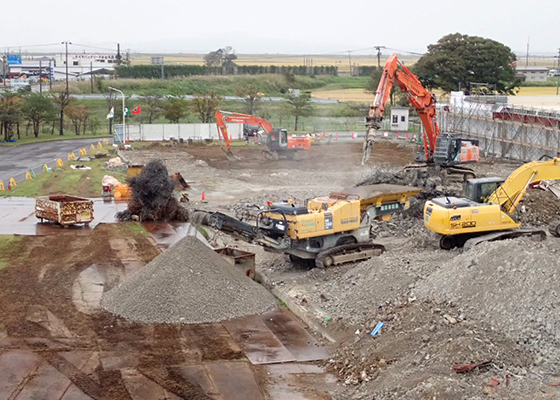
Concrete is ground up by a Galapagos crusher (September–October 2018)
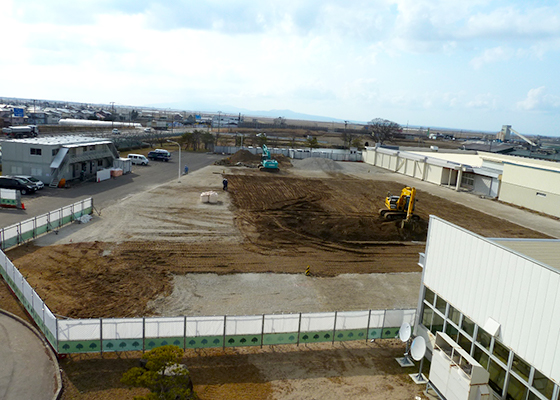
Ground concrete reused as gravel (white areas) (September–October 2018)
Effective Use of Rain and River Water (Thailand: Bang Pa-in Plant)
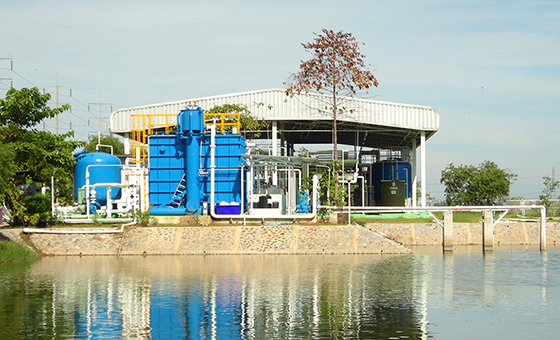
Bang Pa-in Plant's rainwater reservoir and rainwater reuse facility
In Thailand, our plants collect rainwater in a reservoir on the plant grounds and purify it at rainwater reuse facilities for reuse as industrial water, thereby reducing the amount of tap water used.
In addition to this system, one of the Thai plants took further steps in FY2012 to substantially reduce tap water consumption by drawing water from the nearby Chiang Rak Noi Canal and purifying it to use as an alternative to tap water. With the start of this system, the plant has reduced both its tap water consumption and its water related costs.
Recycling Water Resources and Reusing Wastewater (China: Qingdao Plant)
At Qingdao Plant, for the purpose of reusing water resources, a wastewater treatment equipment that allows wastewater discharged from water clarification equipment (use: to clarify drinking water for employees) and water purification equipment (use: water for production and humidifiers) to be stored in tanks and reused in toilets was installed.
Effect: Saves approx. 5,000 m3 of water per year, reducing approx. RMB 250,000 (415,000 yen) per year
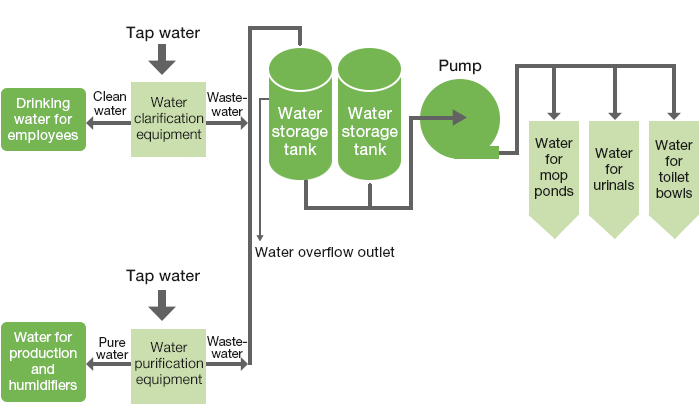
Action to Reduce Waste Plastic (Cambodia)
Waste collection, separation, and disposal are becoming a major social issue in Cambodia, which has inadequacies in its social infrastructure and education system. The Cambodia plant started initiatives to reduce plastic waste at its cafeteria, one of the first to do so in Cambodia, changing the sale of fruits at its cafeteria from using disposable plastic bags to reusable plastic plates and introducing reusable plastic cups.
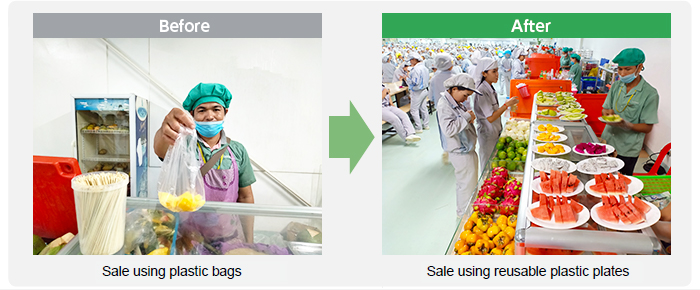
Future Issues and Goals
By FY2026, the Group's goal is to reduce the amount of waste sent to landfill by 10% per basic unit of production compared with FY2020.
In addition, we are presently conducting a survey of the current situation, and market analysis, of waste products disposed of as landfill with the aim of achieving still further reductions in the future.














